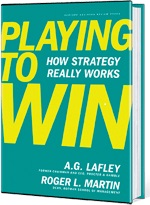Executive Leadership Coach. One-on-one and group business and professional coaching services for high-tech and biotech leaders in the SF Bay Area
The #1 Leadership Communication Mistake
I have come to the conclusion that there is one pretty universal communication mistake that is the most damaging and causes the most mischief for leaders.
Are you ready? The mistake is: not preparing well. Yes, I know this is not very sexy, but it is incredibly ubiquitos. People just don’t think about preparing in advance for a crucial conversation, and they typically don’t invest nearly enough time in preparing for a high-stakes presentation or Q & A session.
Think about it this way: there are probably 5%, maybe 10% at the most, of your communications that are truly extremely important. Situations where careers, or very large amounts of money are at stake. My most frequent and important advice is, invest the time to prepare properly for these moments. The more important the communication, the more time you should invest preparing for it. More specifically:
- For a 1-1 meeting, decide what you will say in advance; and role play the conversation with a skilled communicator whom you trust. Do the role play as if you were having the actual conversation–don’t just talk about what you plan to say. Do it fully in role. Then have them give you feedback, and role play it again. Practice until you’ve got it down. It will make for a better outcome, and will also greatly enhance your confidence level going into the conversation, because you have already done it!
- For an important Q & A session, write down the questions that you are mostly likely to be asked, and also the questions you most fear. Then map out your answers, and practice them out loud, again with someone who can give you feedback. Practice the same question and answer several times, until you really nail it, then move to the next question. When you have them all, then practice answering a series of questions.
- For a presentation, deliver the whole presentation several times, also out loud. Practicing it in your head is not the same as practicing it aloud, because you are not rehearsing the actual behavior you are preparing for. And again, if possible, have someone in the room who can give you candid feedback.
About the author:
Eric Nitzberg, is the Principal of Sierra Leadership and an Executive Leadership Coach for Mariposa Leadership, Inc. Want to read more from Eric? Visit his blog.
MORE








